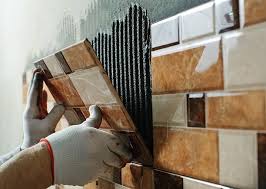- Clay
- Quartz
- Feldspar
- The wide variety of colours and designs that matches with almost any given interior decoration theme.
- The wide variety of textures and types that allows for creating unique decorations.
- The natural materials used in their making offers recyclability and eco-friendliness which reduces impact on the environment.
- The cost effectiveness and affordability compared to hardwood, marble and other flooring solutions.

